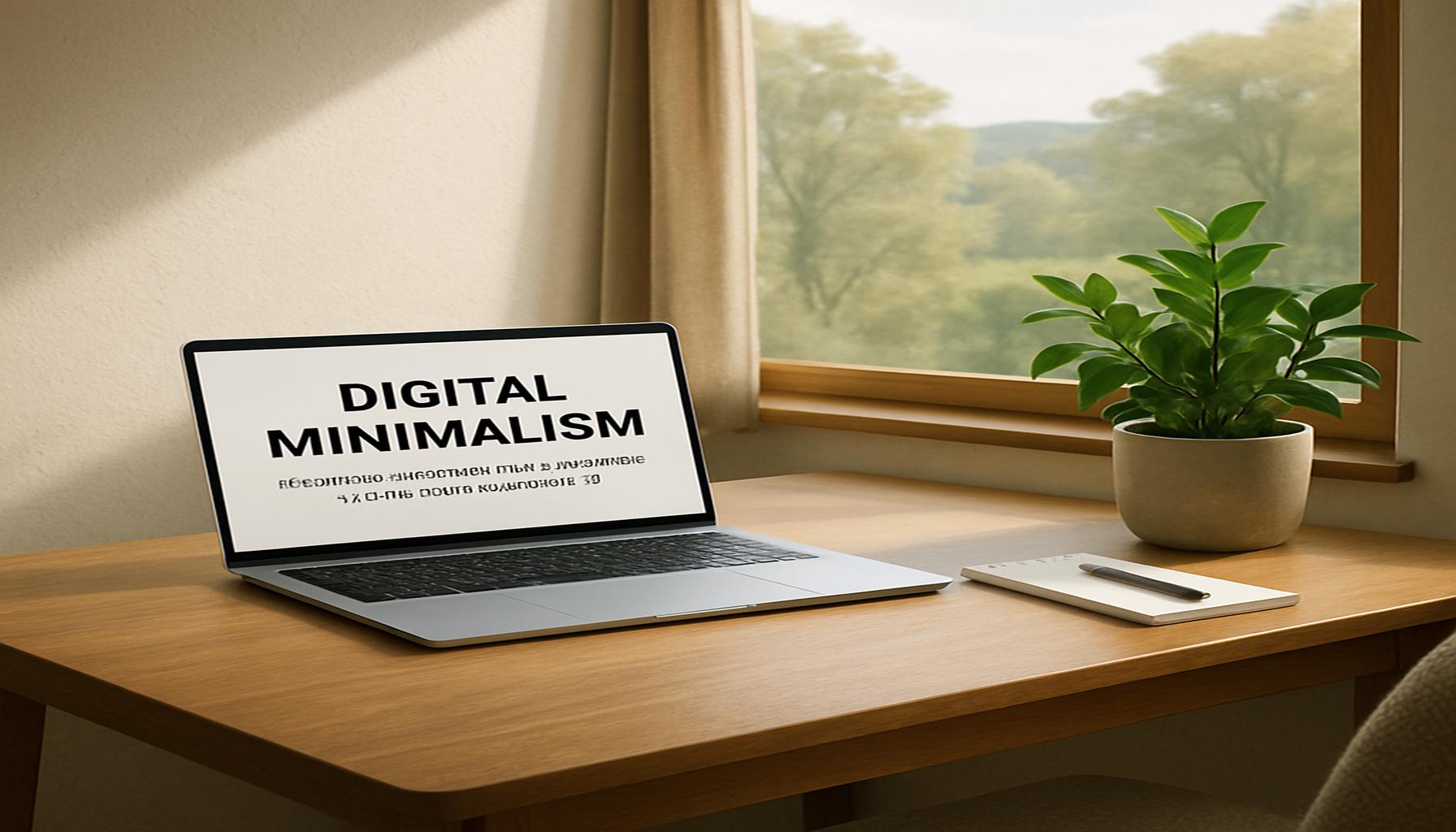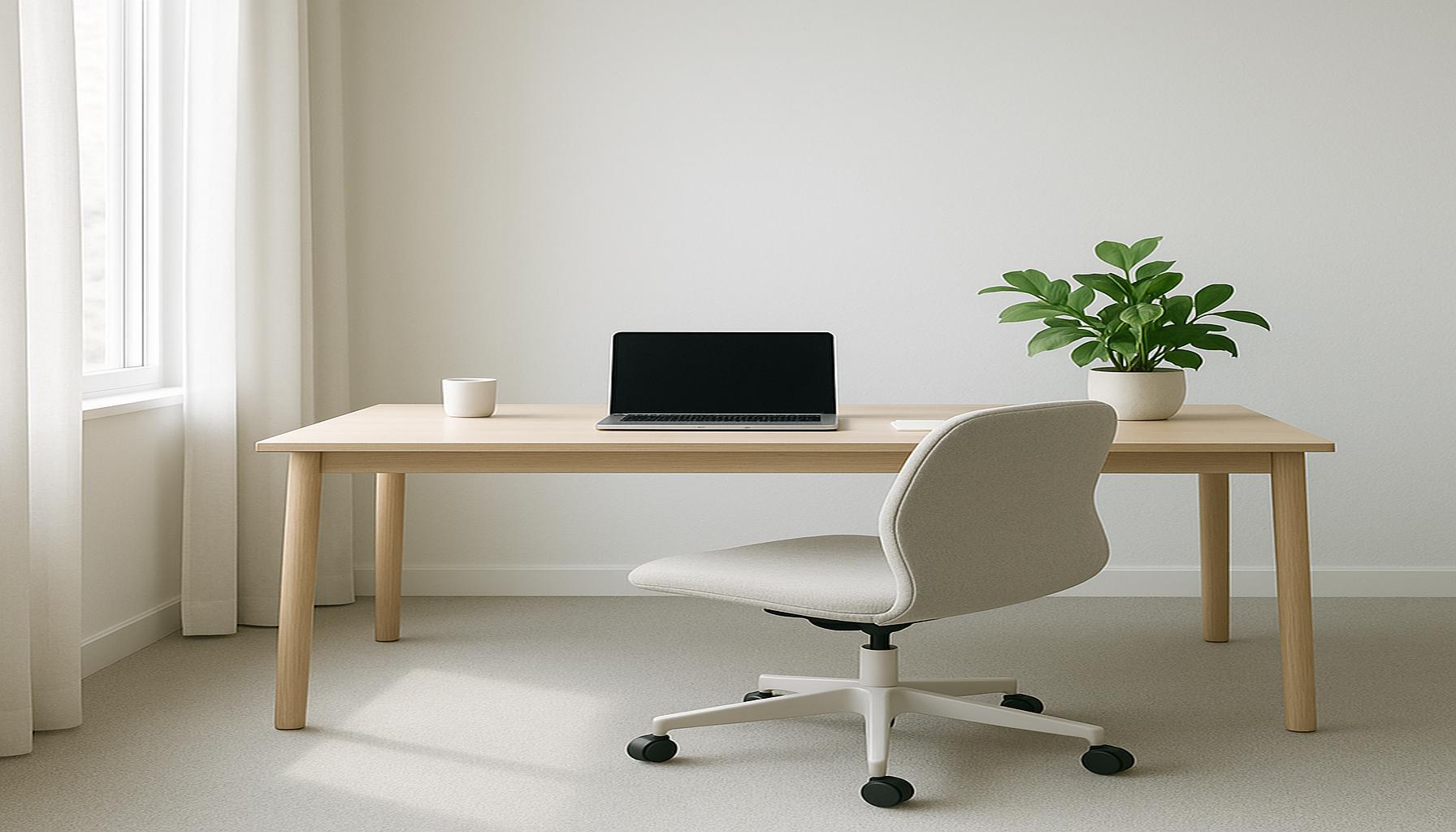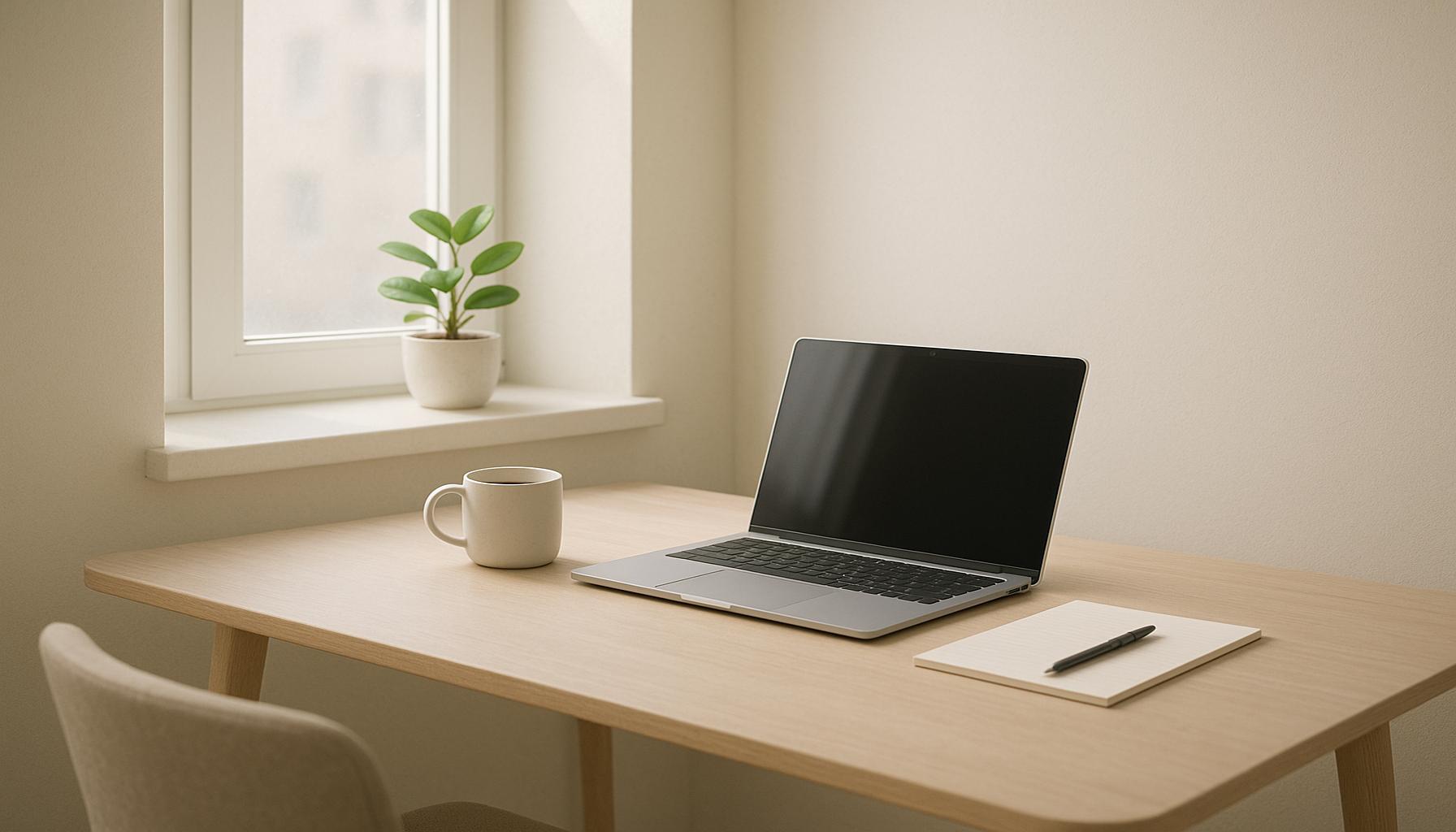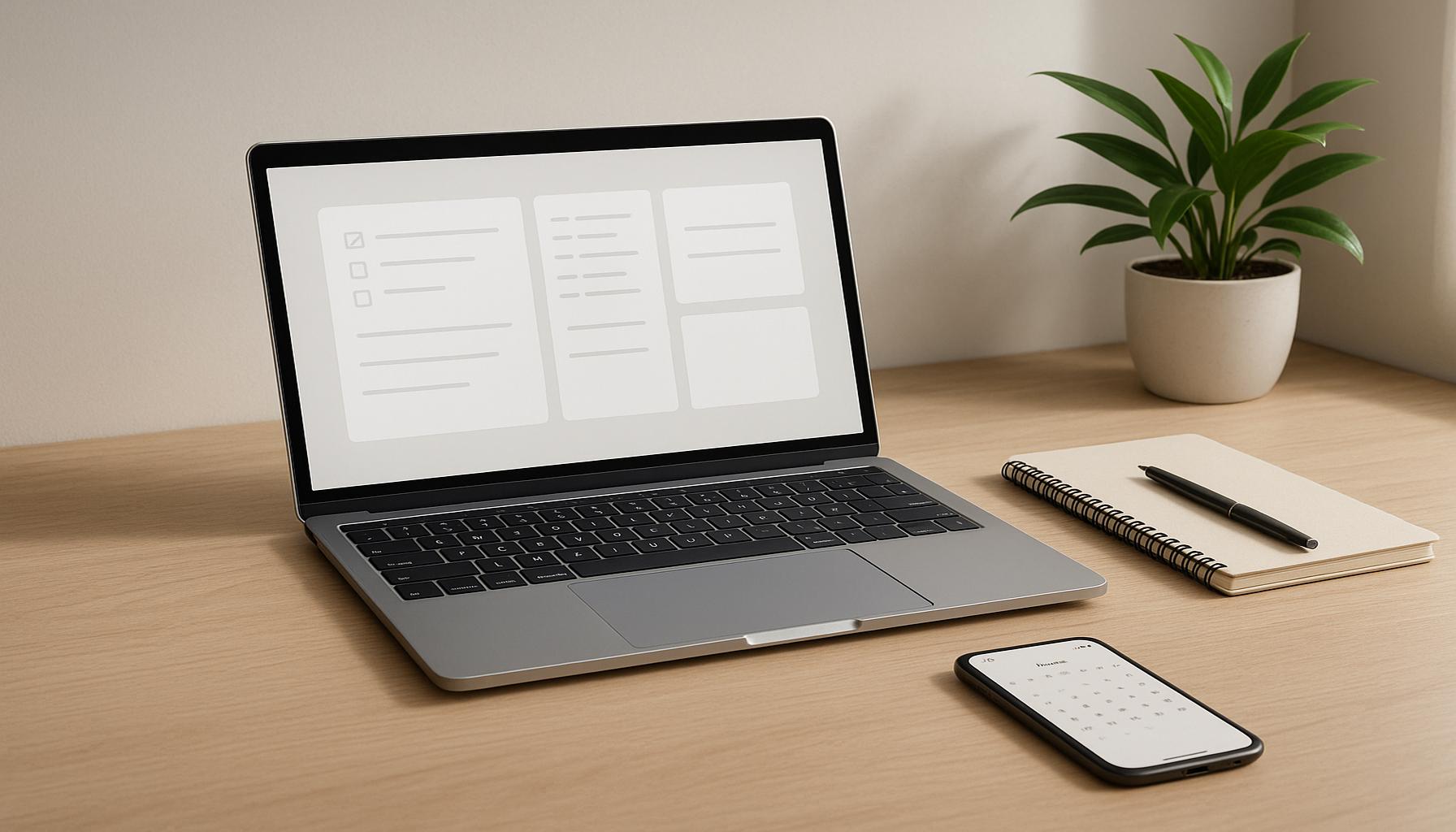Digital Minimalism: How to Disconnect to Increase Efficiency in Personal and Professional Life

Understanding Digital Minimalism
In an age dominated by screens and notifications, the art of digital minimalism has never been more crucial. It is not merely about reducing screen time; instead, it is a conscious choice to create a more fulfilling life by embracing less. By strategically disconnecting, individuals can unlock greater efficiency and purpose in both personal and professional spheres. This philosophy advocates that by removing digital distractions, one can regain control over their time and focus on what truly matters.
Many people are discovering the benefits of this lifestyle, which can include:
- Improved focus: By minimizing distractions, individuals can concentrate better on tasks, leading to higher productivity levels. Numerous studies suggest that multitasking can reduce productivity by as much as 40%.
- Enhanced creativity: A clear mind can facilitate innovative thinking and problem-solving. Without constant interruptions, the brain has the mental space to engage in deeper thought processes and creative endeavors.
- Better mental health: Disconnecting from digital noise can reduce stress and anxiety levels. According to research, excessive use of social media is linked to increased feelings of isolation and depression, highlighting the importance of taking breaks from screens.
Digital minimalism goes beyond simply turning off notifications. Consider these practical steps:
- Evaluate your digital usage: Identify apps and platforms that add value, and consider deleting those that waste time. For example, an individual may find social media sites consume hours without any real benefit.
- Set boundaries: Create specific times for device use to maintain balance. This could mean designating specific hours in the evening for family time, free from digital distractions.
- Engage in offline activities: Rediscover hobbies like painting, cooking, or outdoor sports, and take advantage of local parks and community events to socialize in person. Engaging with nature has shown to significantly enhance well-being and satisfaction.
As you dig deeper into the concepts of digital minimalism, you will find new strategies that can reframe your relationship with technology. For instance, consider adopting a ‘phone-free Sunday’ where you allocate an entire day to digital detox, focusing solely on face-to-face interactions and personal interests. By disconnecting purposefully, it is possible to elevate your efficiency and enrich your daily experiences, paving the way for a more meaningful life. In a world increasingly defined by digital interactions, embracing minimalism in technology usage promises not only personal enrichment but ultimately a more substantial connection to the world around you.
DISCOVER MORE: Click here for effective decluttering strategies

The Benefits of Embracing Digital Minimalism
As individuals embark on their digital minimalism journey, they often discover a treasure trove of benefits that can optimize their personal and professional lives. Reducing digital clutter is not only invigorating for the mind but can also translate into tangible gains in various aspects of everyday living. To better understand its impact, let’s delve into how digital minimalism fosters productivity, creativity, and mental well-being.
1. Streamlined Productivity: In a world where distractions abound, the quest for productivity can seem daunting. Digital minimalism offers a powerful toolset to curate an environment conducive to focus. By consciously selecting applications and eliminating unnecessary notifications, individuals can cultivate a workflow tailored to their needs. According to a study conducted by the Pew Research Center, nearly 60% of adults report that technology often distracts them from their current tasks. The reduction of such distractions can yield drastic improvements in output and efficiency.
Experts suggest implementing the Pomodoro Technique, which encourages short bursts of focused work followed by brief breaks. Creating periods of concentrated effort allows for heightened awareness and fosters an environment where productivity can flourish.
2. Cultivating Creativity: It’s a common phenomenon that genuine creativity emerges when the mind is free from clutter. Digital minimalism encourages the deliberate act of disengaging from digital platforms that bombard us with information. In doing so, individuals can foster an internal space ripe for inspiration and originality. An article in the Harvard Business Review indicates that people who allocate time away from screens report experiencing “aha” moments and heightened imaginative thinking more frequently.
Many advocates of digital minimalism recommend engaging in exercises that promote creative thinking, such as:
- Journaling: Taking time to write without digital distractions allows the mind to wander and explore ideas.
- Mind Mapping: Visual representations of thoughts can lead to unexpected brainstorming sessions.
- Nature Walks: Disconnecting from technology while immersing oneself in nature rejuvenates the senses and sparks new ideas.
3. Promoting Mental Health: The relentless scrolling through social media feeds and the constant notifications from apps can take a toll on mental well-being. Research published in the American Journal of Preventive Medicine shows a direct link between excessive screen time and increased stress levels, anxiety, and depression. Digital minimalism advocates for intentional usage, leading to a significant reduction in feelings of overwhelm.
Implementing simple practices such as limiting social media engagements to specific times, curtailing the number of apps on mobile devices, and focusing on nurturing in-person relationships can open up pathways to improved mental health. By recognizing the importance of digital detoxifying, individuals can create breathing space essential for psychological clarity and stability.
As technology continues to weave itself into the fabric of daily life, recognizing the principles of digital minimalism can be the key to a more intentional, efficient existence. By prioritizing presence over perpetual connectivity, individuals can unleash their potential both personally and professionally, leading to a richer, more meaningful experience in all areas of life.
| Advantage | Impact on Life |
|---|---|
| Enhanced Focus | Reducing distractions leads to deeper work and improved concentration, vital for achieving personal goals. |
| Reduced Stress | Disconnecting from constant notifications fosters a sense of calm, decreasing anxiety and promoting mental clarity. |
Exploring the path of digital minimalism empowers one to take back control over their time and resources. The first advantage, enhanced focus, beckons individuals to embrace a life where they can give their full attention to what truly matters. In environments overflowing with notifications and distractions, fostering a deep work ethic becomes paramount. Furthermore, the reduction of stress through intentional disconnection acts as a catalyst for improved productivity; clarity of thought coupled with tranquility enhances both personal and professional pursuits.Digital minimalism is not just a theory; it’s a transformative lifestyle. Consider implementing strategies such as designated phone-free periods or simplifying digital tools to witness improved efficiency and overall satisfaction. By prioritizing mindful interactions with technology, individuals may experience profound benefits in their daily lives, leading to a more balanced existence.
DISCOVER MORE: Click here to enhance your productivity
Overcoming Challenges: Implementing Digital Minimalism
While the advantages of adopting digital minimalism are promising, the path to achieving a balanced digital life is not devoid of challenges. Many individuals find themselves grappling with the very technology they seek to minimize, feeling an emotional attachment to their devices and applications. Understanding these challenges and devising strategies to overcome them can pave the way for a smoother transition into a more intentional digital existence.
1. Recognizing Digital Attachment: One of the first hurdles in embracing digital minimalism is recognizing and confronting the emotional attachments we have toward our devices. A survey from the American Psychological Association revealed that over 60% of respondents often feel anxious when separated from their phones. This reliance can hinder productivity and introduce unnecessary stress into both personal and professional spheres.
To mitigate these feelings, experts suggest gradually substituting digital activity with alternative pursuits that promote engagement and fulfillment. For instance, participating in community events or rediscovering hobbies can help diminish the compulsive need to check notifications constantly. Awareness of one’s attachment can serve as a pivotal step toward a more liberated digital lifestyle.
2. Setting Boundaries: Establishing electronic boundaries is a cornerstone of digital minimalism. Individuals must delineate specific periods during which technology is permitted and create tech-free zones within their environments. A survey conducted by Futurism found that setting boundaries, such as having device-free family dinners or tech-free weekends, promotes deeper connections and enhances overall quality of life.
The implementation of time management tools can also aid in curbing digital overindulgence. Utilizing apps that track screen time or employing the “Do Not Disturb” function can support users in adhering to their boundaries. Simple practices, such as scheduling time for emails or messages, encourage a more intentional approach to digital communication.
3. Reassessing Digital Tools: With an abundance of applications and tools available, discerning which ones genuinely serve one’s goals can be a daunting task. Many users find themselves overwhelmed by the sheer volume of options, leading to decision fatigue. Acknowledging this, digital minimalism encourages a methodical review of one’s digital tools and subscriptions to identify which genuinely enhance productivity.
Engaging in regular digital decluttering can streamline workflows and reduce the cognitive load of unnecessary choices. Start by listing all installed applications and assessing their value in terms of personal and professional efficiency. Keeping only those that align with specific goals can greatly reduce mental clutter and improve focus. An article from Forbes emphasizes the importance of employing a “one in, one out” rule, which reinforces intentionality in technology usage.
4. Embracing the Shift: Finally, it’s crucial to remember that transitioning to digital minimalism is a process. It requires patience and consistency, as ingrained habits take time to adjust. In the fast-paced society of the United States, the urge to maintain constant connectivity can feel overwhelming; however, setting realistic goals can facilitate a smoother adjustment. The idea is not to eliminate technology altogether but to embrace it mindfully and purposefully.
As individuals navigate their journeys through digital minimalism, they uncover the tools and practices that work best for them, leading to a more fulfilling and balanced lifestyle. Understanding that digital minimalism is a personal journey may open doors to new insights, deeper connections, and increased overall efficiency in both personal and professional realms.
DISCOVER MORE: Click here to learn effective decluttering strategies
Conclusion: Embracing Digital Minimalism for a Productive Future
As we stand on the brink of an increasingly digital world, embracing digital minimalism can serve as a critical lifeline in enhancing personal and professional efficiency. The journey to a more intentional digital life is paved with the recognition of our emotional ties to technology, the establishment of healthy boundaries, and the conscious selection of tools that align with our goals. By implementing these strategies, individuals can reclaim their time, reduce stress, and cultivate deeper connections—both online and offline.
Moreover, transitioning into a minimal digital lifestyle is not just a trend, but a necessary commitment that can yield transformative benefits. Research indicates that individuals who adopt digital minimalism experience increased creativity and improved mental clarity, allowing them to channel their energies into their passions and priorities. This newfound freedom can lead to enhanced productivity, clearer communication, and stronger relationships, ultimately creating a ripple effect of positivity in one’s life.
As we embrace the path of digital minimalism, it is essential to view it as a customizable journey. Each person’s experience will be unique, demanding open-mindedness and adaptability. This exploration for balance will reveal innovative solutions to overcome the distractions of our digital era. For anyone seeking a more fulfilled existence, redefining our relationship with technology might just be the key to unlocking our full potential. So, take the first step today—disconnect to reconnect with what truly matters.


